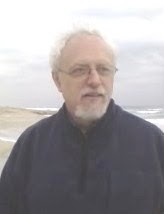

Sometimes the deeper significance of the Christmas holiday gets lost in all of the comercial excess in December.
Noel Regney (1922-2002) was a Frenchman trained as a classical composer who was drafted into the German army in World War II. He deserted and joined the French Resistance. [During his work with the Resistance he suffered the horrors of war directly: he was shot, but survived.] After the war ended, Regney joined the French Overseas Radio Service and worked out of French Indochina until moving to Manhattan in 1952. He met Gloria Shayne while she was working as a pianist in a hotel dinning room and married her a month later.
Regney and Shayne wrote "Do You Hear What I Hear" in 1962 during the Cuban Missile Crisis. Regney drew the image of Jesus as a newborn lamb from Matthew 2:9 and 2:11 and took his lyrics to his wife to set in the reverse of their usual practice. But while it is often taken for a Christmas carol, for Regney and Shayne "Do You Hear What I Hear" is a hymn to peace. "I am amazed that people can think they know the song," Regney later said, "and not know it was a prayer for peace." Although the song has been recorded by Bing Crosby and Perry Como and over 120 others, Regney and Shayne's favorite recording was Robert Goulet's 1963 recording for its dramatic delivery and his climatic "Pray for peace, people everywhere." ~ James Leonard, All Music Guide
Here's a link to the Bing Crosby version of "Do You Hear What I Hear"
And here are the lyrics:
Do You Hear What I Hear?


